In this article we propose 10 exercises to stimulate language that neurorehabilitation professionals can use in their intervention.
Language is one of the main cognitive functions that allows people to formulate, communicate and understand ideas through sounds, symbols and/or systems of gestures. In other words, “language is the result of a complex nervous activity that allows interindividual communication of psychic states through the materialization of multimodal signs that symbolize these states according to a convention specific to a linguistic community” (Lecours et al., 1979).
Thus, language disorders appear when language development does not follow the expected pattern or when significant deficits occur in some of its aspects. When there is total or partial impairment of language it is generally called aphasia. We already discussed aphasias in a previous post.
Can you imagine not being able to say what you think? Or not being able to understand anything others say? Or not being able to read a sign because you mix up the letters? Language problems translate into limitations in the daily life of people with these disorders.
At NeuronUP we have numerous exercises to stimulate language. We show some examples below:
10 Exercises to Stimulate Language for Adults and Children
1. Hangman
What does it involve?
This game for adults consists of guessing the hidden words by choosing the letters that form them one by one.
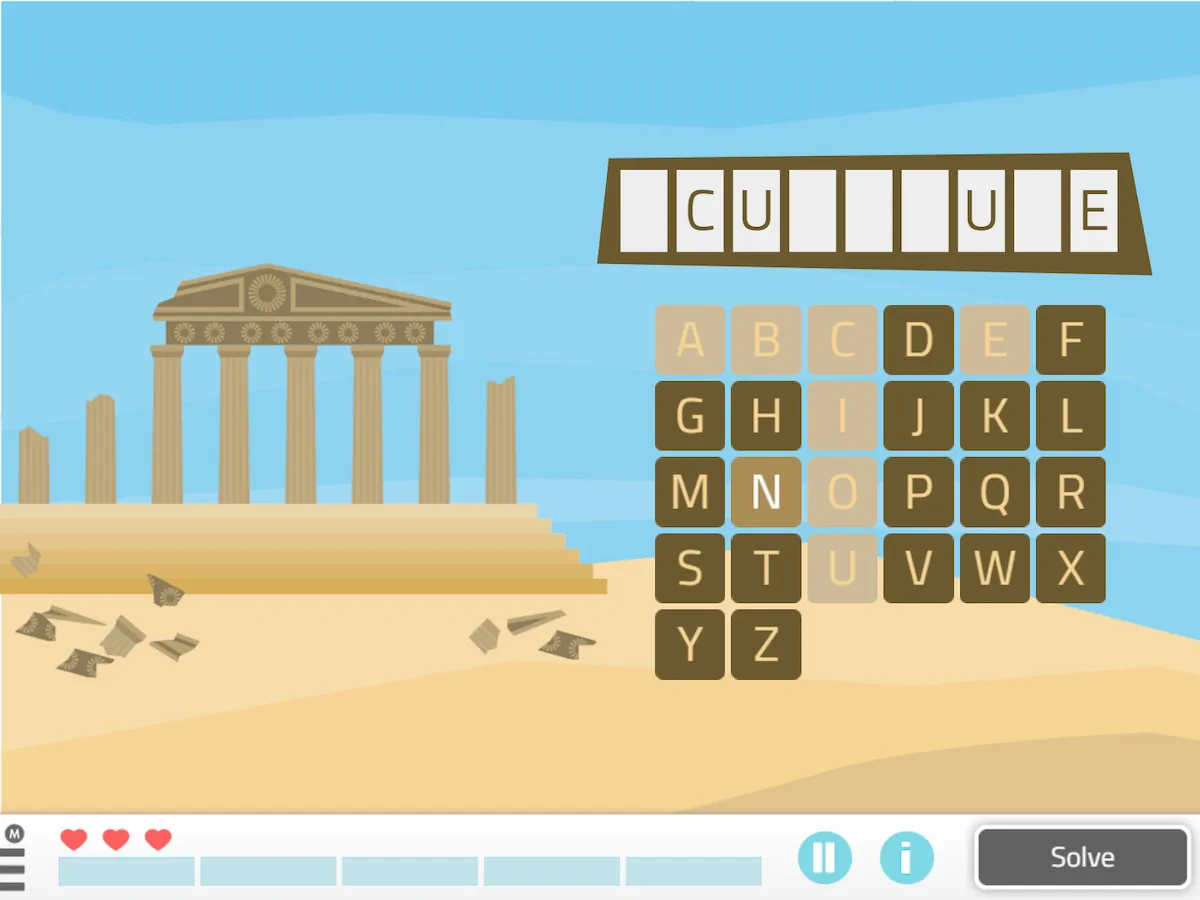
What does this activity train?
- Vocabulary,
- working memory.
Play by levels
It has six phases. In the simplest levels, the user will have fewer points to remember; however, as they increase levels the points will multiply.
2. Naming objects with phonological cues
What does it involve?
It consists, as the name suggests, of naming objects with the help of phonological cues.
We give you an example of an advanced level:
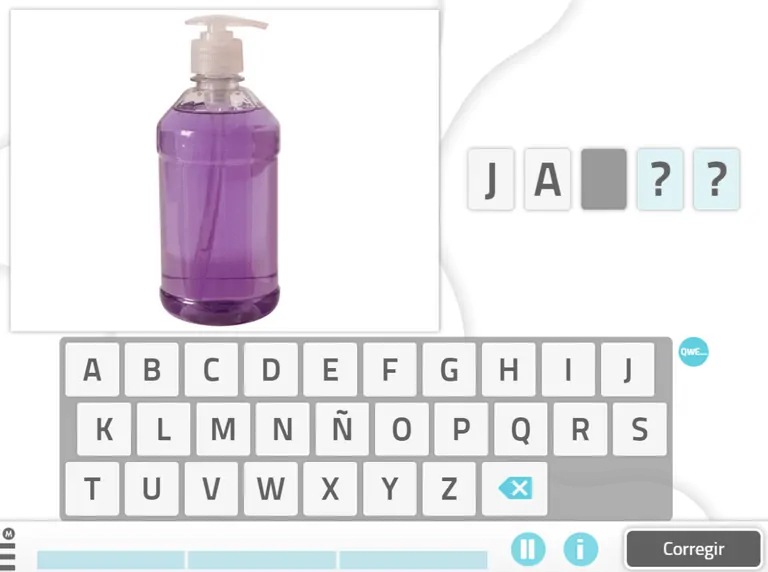
What does this activity train?
This activity trains naming.
3. True or False (Auditory)
What does it involve?
This exercise to stimulate language consists of deciding whether a series of sentences are true or false in relation to the situation shown on the screen.
In NeuronUP this activity has two modes: one in which sentences are presented verbally and another in which they appear written, since not all patients have the same type of deficit.
In the following case, the sentences would be presented verbally and the user should listen and indicate whether they are true or false.
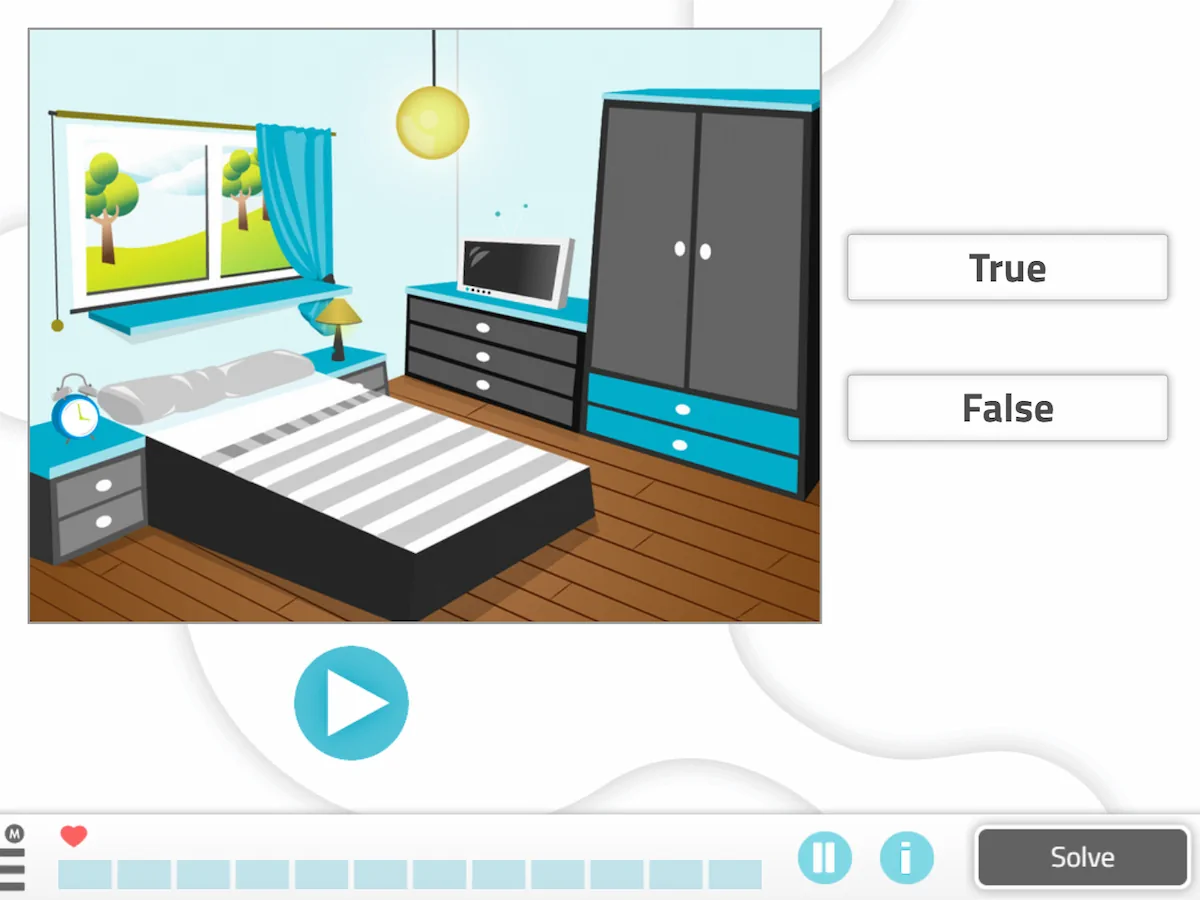
What does this activity train?
The main cognitive function trained is comprehension.
4. Describing Objects´s Positions
If what we want is to work on expression, NeuronUP presents Describing Objects´s Positions.
What does it involve?
This activity is available in paper format and in it the user must indicate the position of various objects located in everyday scenarios.
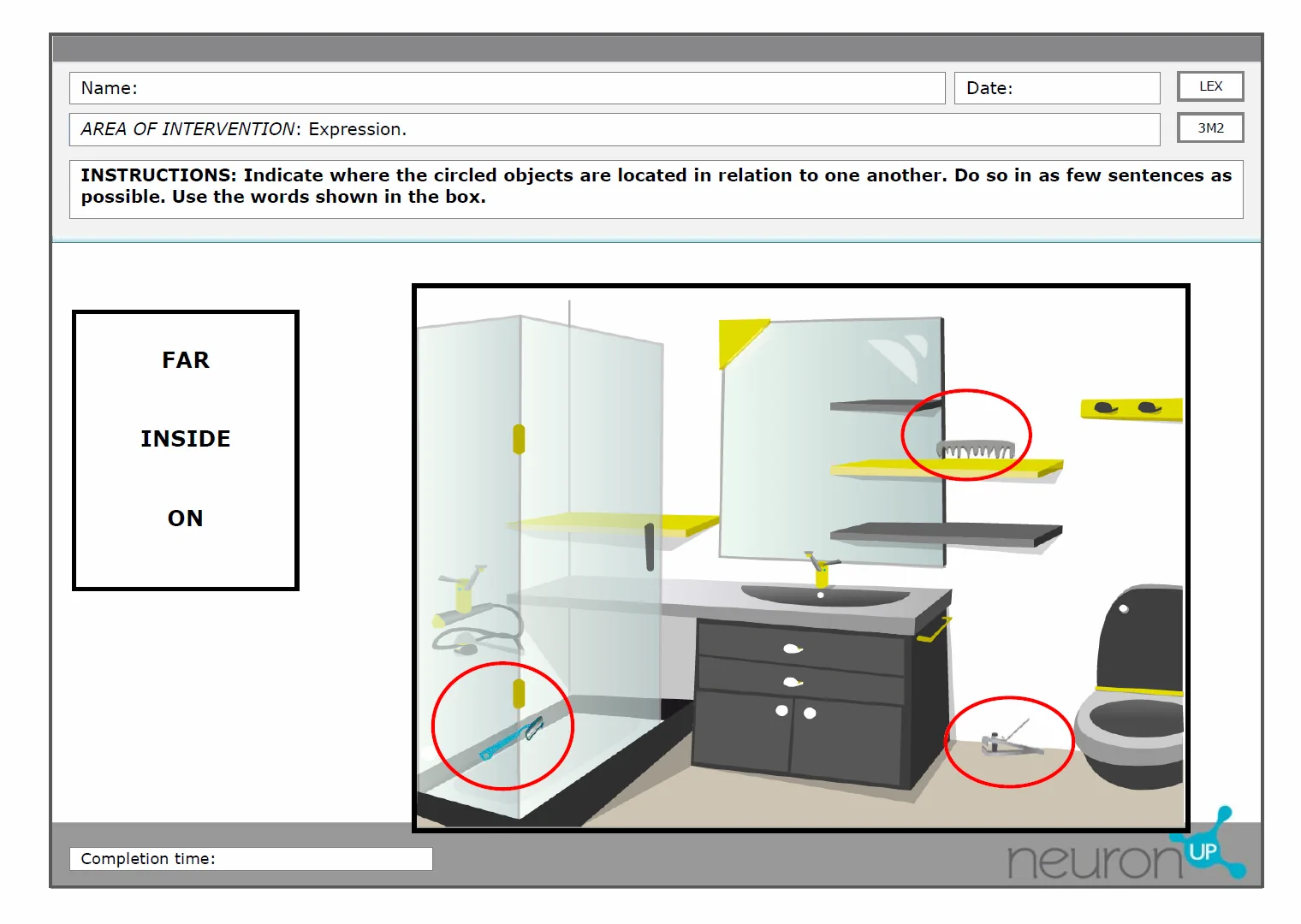
What does this activity train?
This activity to stimulate language trains expression.
5. Word Scramble
What does it involve?
This exercise to stimulate language consists of ordering the letters that appear to form a word.
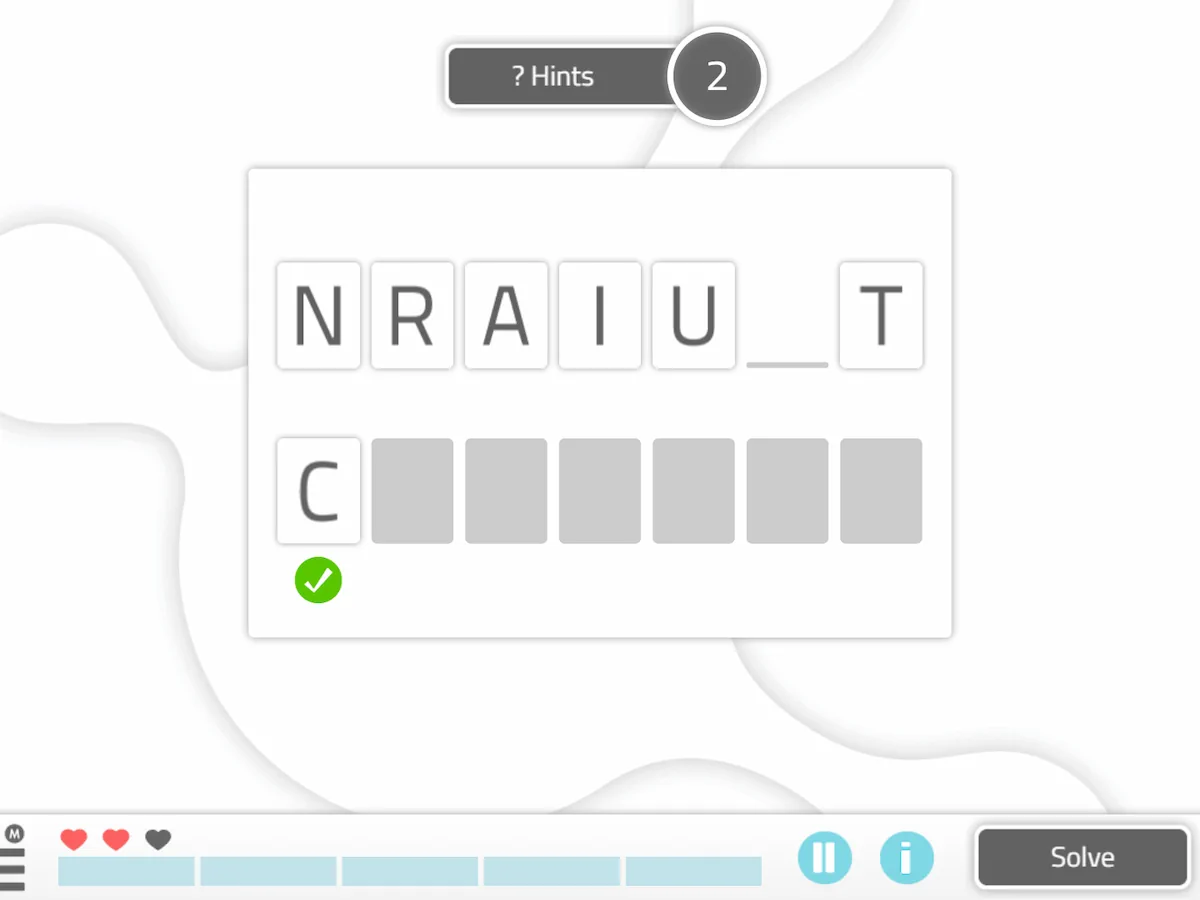
Do you know what the word is? A hint: it starts with the letter “B”.
What does this activity train?
It trains:
- Vocabulary,
- working memory.
6. Converting Numbers into Words
What does it involve?
The following activity we propose to stimulate language has to do with numbers. It consists of matching numbers with their corresponding names.
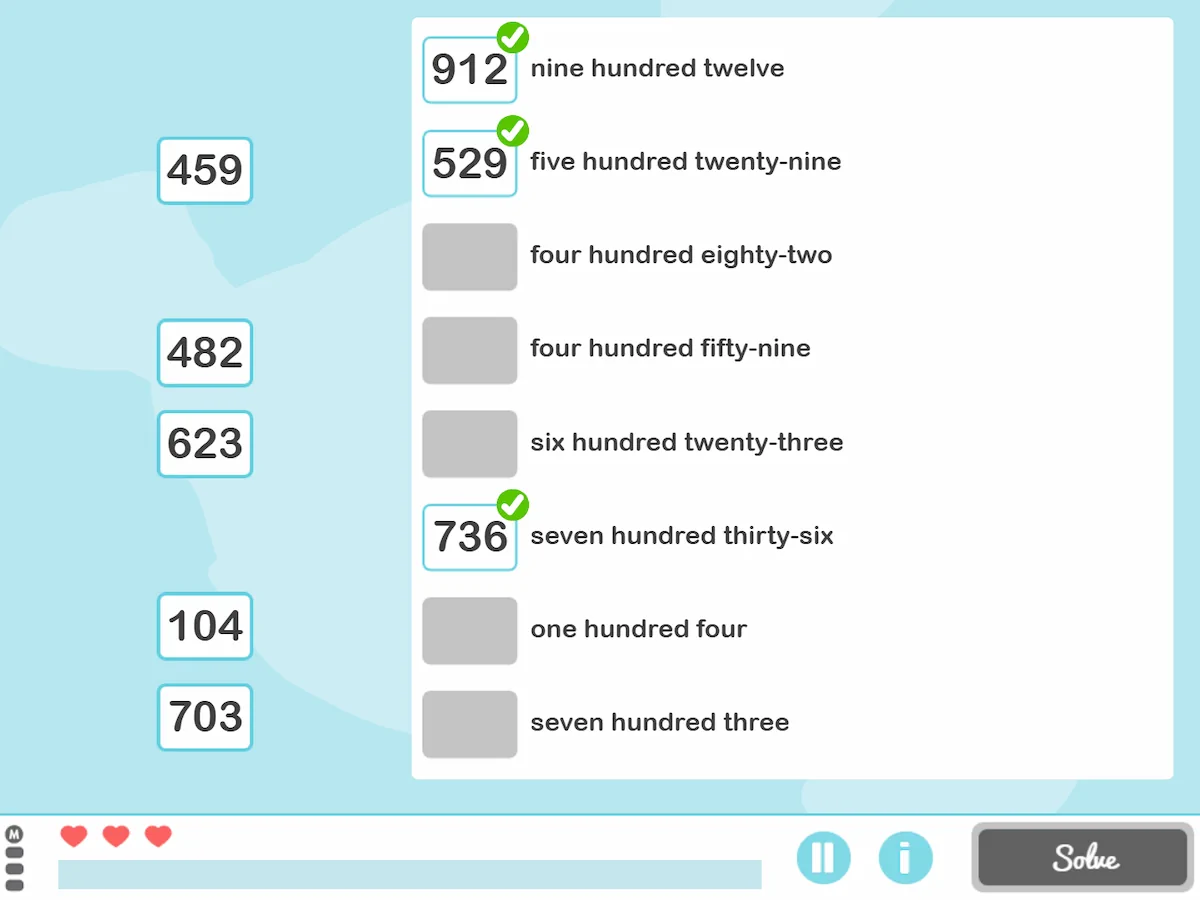
What does this activity train?
This exercise trains:
- Reading,
- semantic memory,
- reasoning.
7. Tracing Lines
What does it involve?
If the previous activity is focused on reading, this exercise is aimed at having children work on Graphomotor Skills with the goal that later they can move on to exercises with letters.
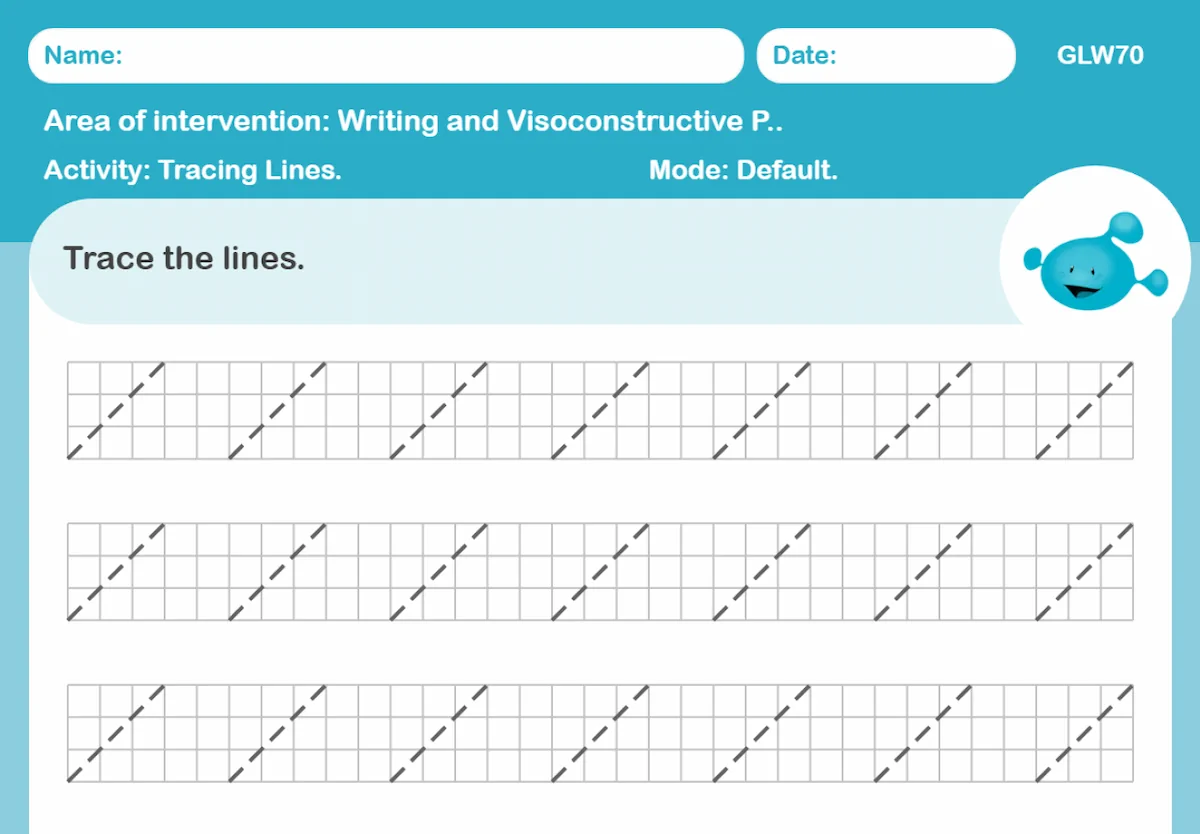
What does this activity train?
- Graphomotor Skills,
- visuoconstructive praxis.
8. Step by Step
What does it involve?
An activity to work on comprehension with children is Step by Step. It consists of children ordering the different steps necessary to carry out an activity.
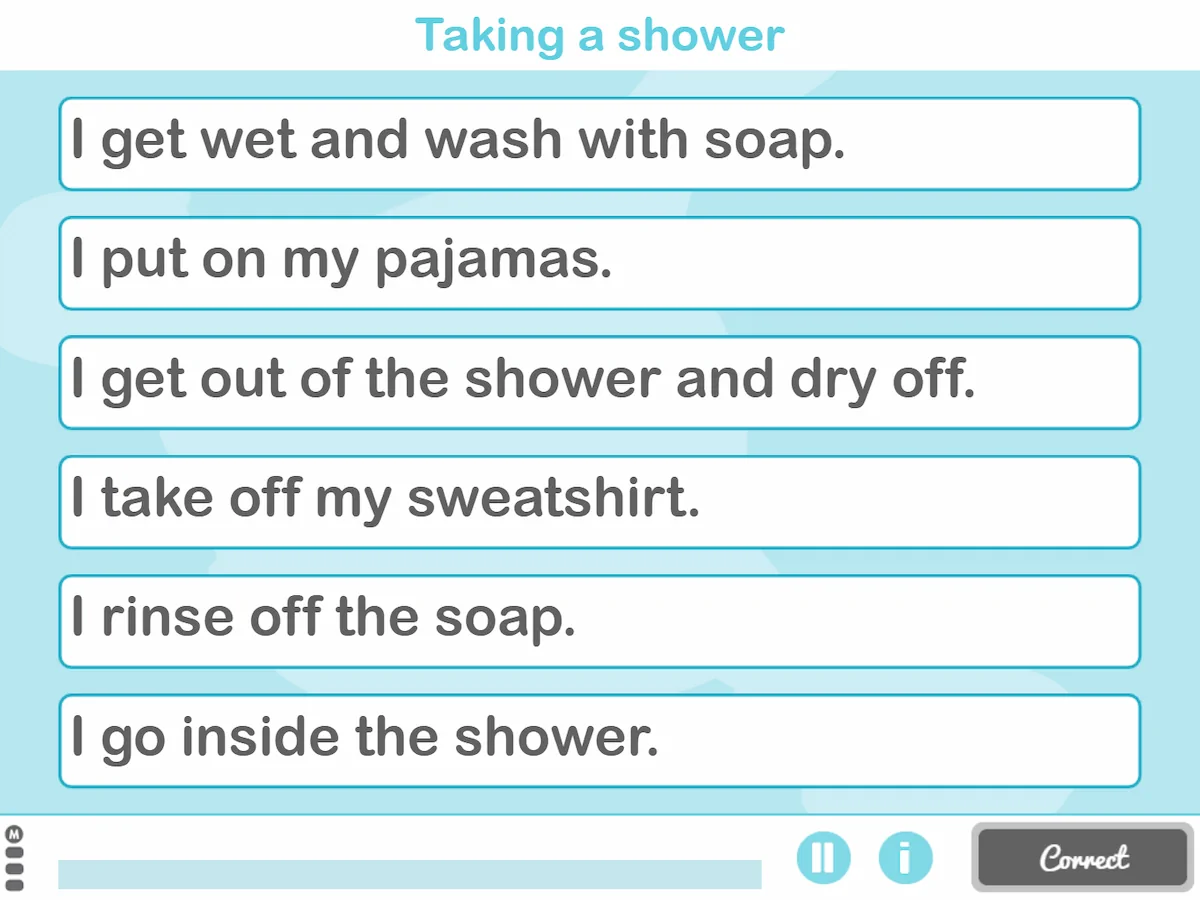
This activity is also available for adults.
What does this activity train?
- Reasoning,
- planning,
- comprehension.
9. Making Words
What does it involve?
Another exercise to stimulate language is Making Words. This activity consists of forming words by ordering fragments, syllables or single letters.
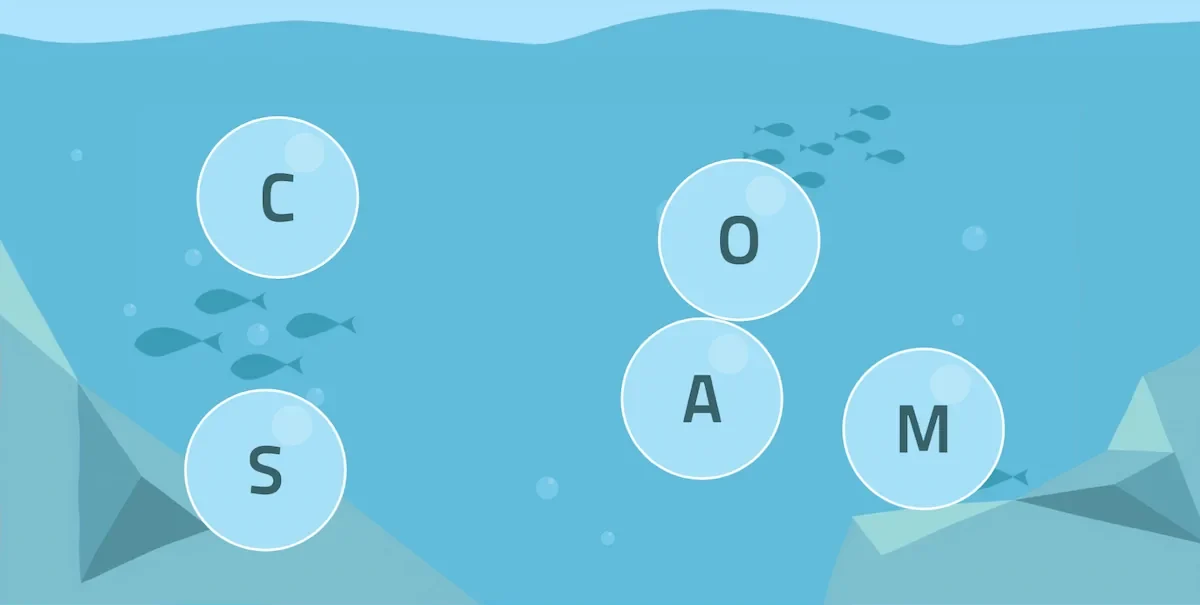
What does this activity train?
This activity trains:
- Vocabulary.
- hemineglect,
- working memory.
10. Matching Adjectives to Images
What does it involve?
The following exercise to work on vocabulary consists of matching each adjective with the image that represents that characteristic.
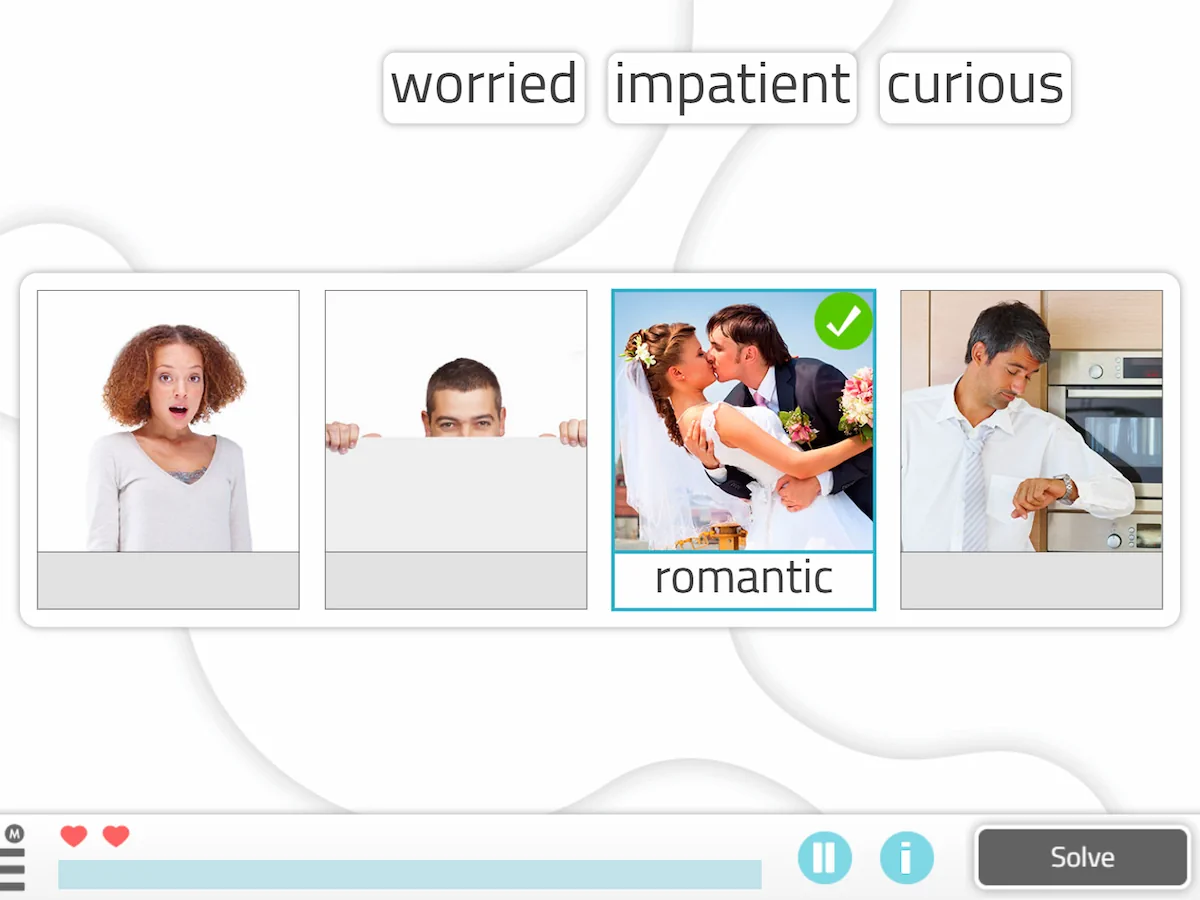
What does this activity train?
This exercise trains vocabulary.
If you liked this article about exercises to stimulate language, you may also be interested in these other articles:
“This article has been translated. Link to the original article in Spanish:”
10 ejercicios para estimular el lenguaje
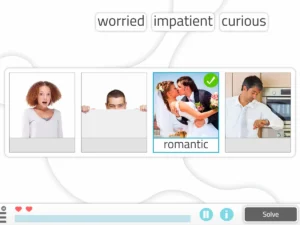

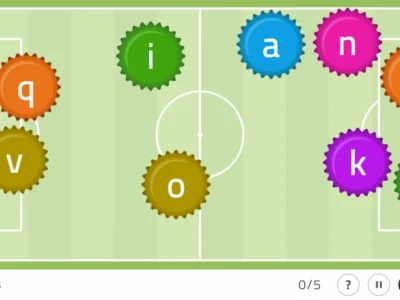

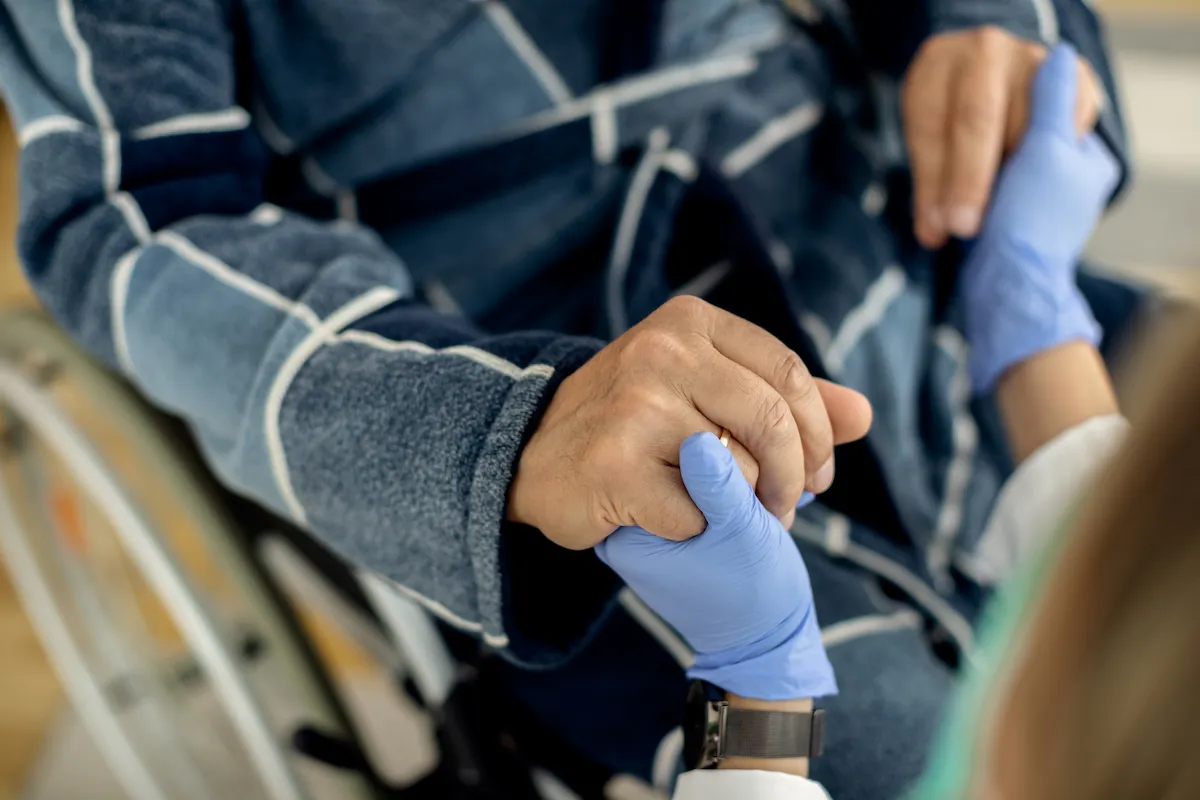


 Activities for neuropsychological rehabilitation in patients with Broca’s aphasia
Activities for neuropsychological rehabilitation in patients with Broca’s aphasia
Leave a Reply